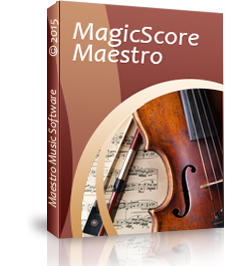Easy guide to music notation
1. Clefs and staff
For the most amateur musicians, music notation looks odd and obscure. Yet we all know that any problem can be solved and any riddle can be guessed, given a… clue. The good news is that music has such clues or keys, or clefs. There are several clefs, each having its own name.
| G clef. Its curl indicates the location of the G note. Historically, this used to be letter G, which has been transformed to the G Clef, as we know it. | |
| F clef. The F note is located on the line between the two dots. Once this was a letter F. | |
| C clef. The arrow connecting the two curls indicates the line of the C note. It’s hard to tell, but originally this was a letter C. |
There are two more special clefs:
| Neutral clef. It is used for the notation of rhythms, and is widely used for drums. Often rhythmic figures and strumming patterns for guitar can be written with this clef | |
| Tablature clef. This clef indicates that each line represents a guitar string, the strings being numbered from top to bottom. The digits on the lines denote fret numbers, where the string has to be pressed. |
For guitarists, only two clefs are of primary importance: G (or Treble) and TAB. Bassists and drummers need to learn F (or Bass) and Neutral clefs respectively.
Clefs, lines… Why do we need all this? Let us first look into lines.
| Usually the music sheet (the place where notes are written) consists of five lines – staff, or stave. The staff lines are numbered from bottom to top, opposite to tablature system. Notes can be placed on the lines and in spaces between, as shown in the picture. |
The most important part of a note is a note head, black or white. Its position indicates the pitch of the note, so we can tell high notes from the low ones just by taking a quick look. The higher a note is located in a staff, the higher is its pitch, and vice versa.
2. Pitch
Now, how can we determine which note is located on a specific line? That’s what the clefs are for!
| The curl of the G clef looks a bit like, well, a rifle scope. It sets the position for the G note. G clef centered around the line #2 is called the Treble clef. |
Now let us find out what notes besides the G note can be and what is their order. There are seven notes assigned to Latin letters:
A – la, B – ti, C – do, D – re, E – mi, F – fa , G – sol
This «musical alphabet» is very easy to memorize. Notes follow each other just in this order. Each next note in the alphabet order is higher than the previous one, and vice versa.
/i/pdf/art-10.png»>
If you have understood everything you have just read, then it will be straightforward for you to name all the notes in a staff. If something is still not quite clear, return to the previous section and read it once more. Learn to hone your skills, it is important!
Looking at the previous picture, one might think that the lowest note is D, and the highest is G. However, it is not correct. To write higher or lower pitches we can use additional or ledger lines. The guitar range within the first twelve frets notated in treble clef looks like this:
/i/pdf/art-11.png»>
Together with tabs, it will look like this:
/i/pdf/art-12.png»>
Can you see now why we need a clef? When it is set you can figure out all other notes step by step. Moving from a line to a space is one step, moving from space to another line is another step.
In a similar way we get the range of 4-string bass-guitar within the first twelve frets, in an F clef and in tabs:
/i/pdf/art-13.png»>
F clef placed in such a way that the fourth line is located between the dots is known as the Bass clef. Treble and Bass clefs are the most commonly used in music notation. Sheet music for guitar is written in the Treble clef, and sheet music for bass is written in the Bass clef.
Print out this page and use it as a guide, or better yet put it on the wall and check yourself, until you have learned notes well.
Workout for chapter 2: Name all notes and find them on the fretboard
/i/pdf/art-14.png» width=»100%»>







 Русский
Русский English
English Deutsch
Deutsch
Добавить комментарий